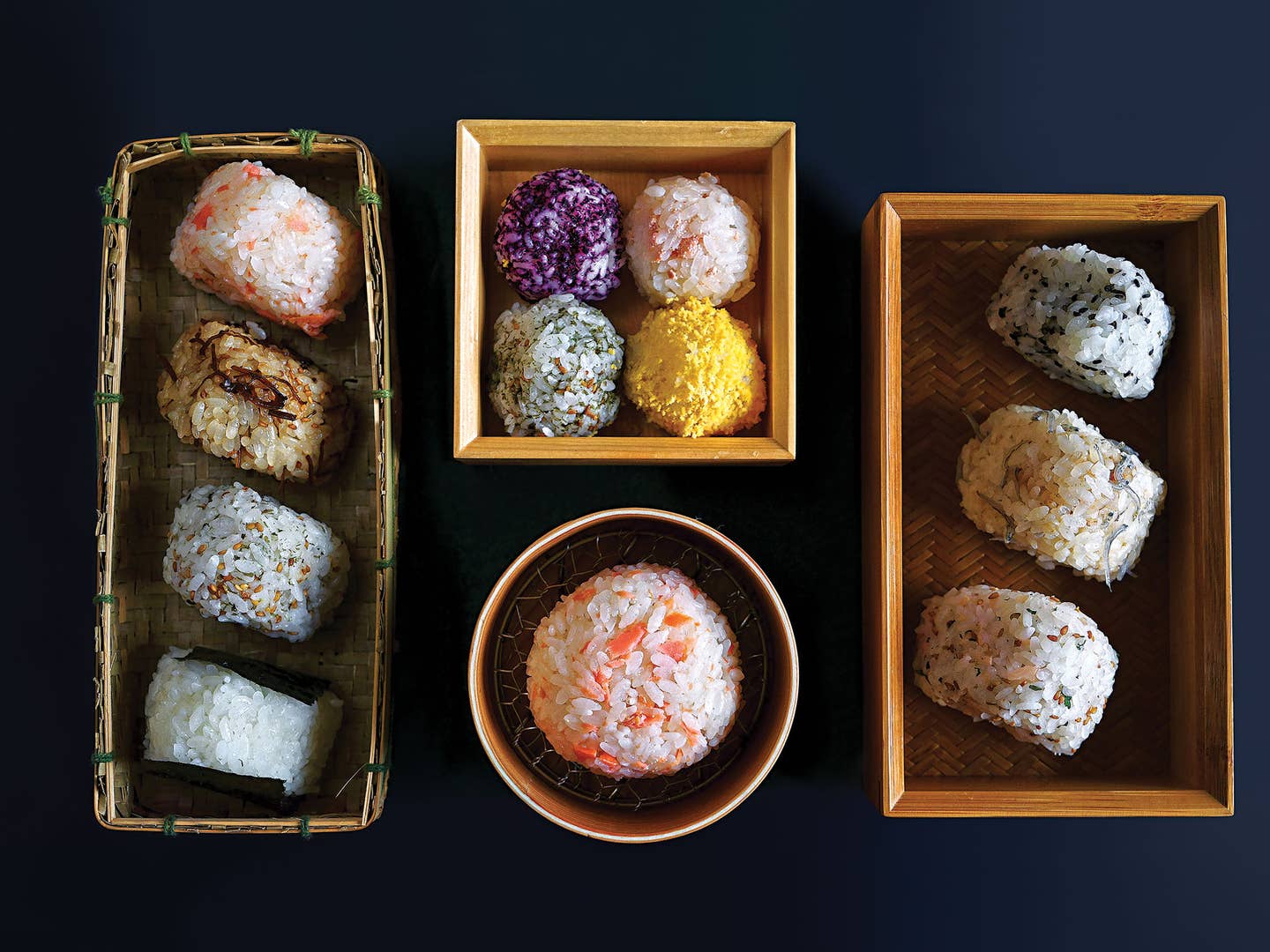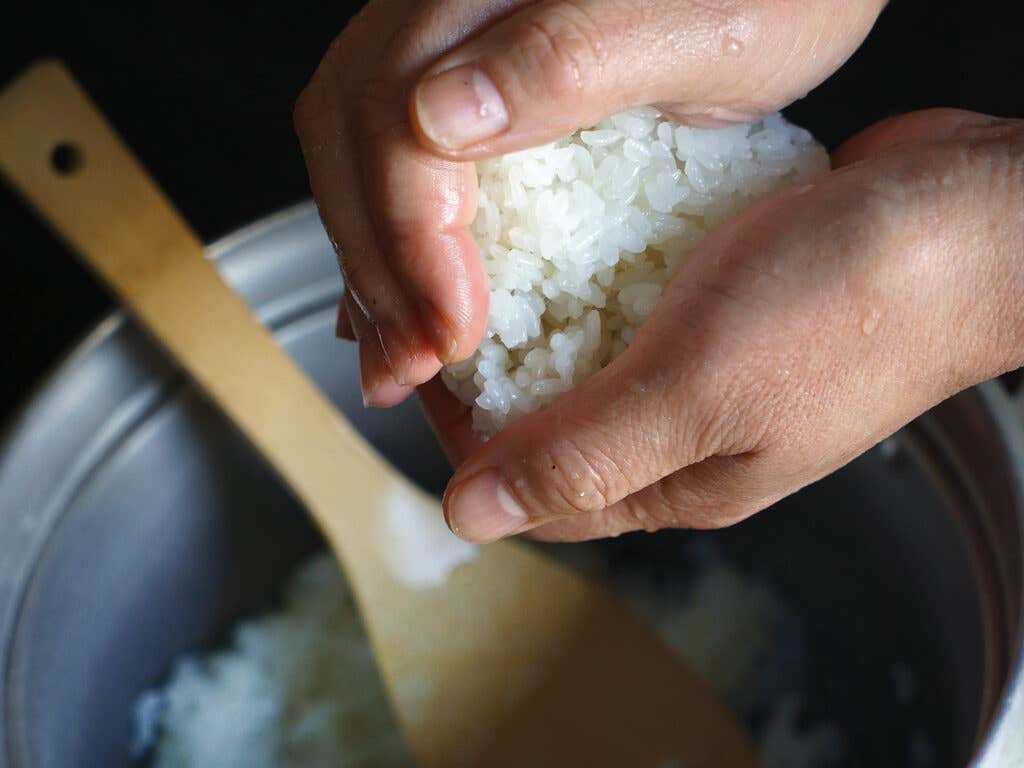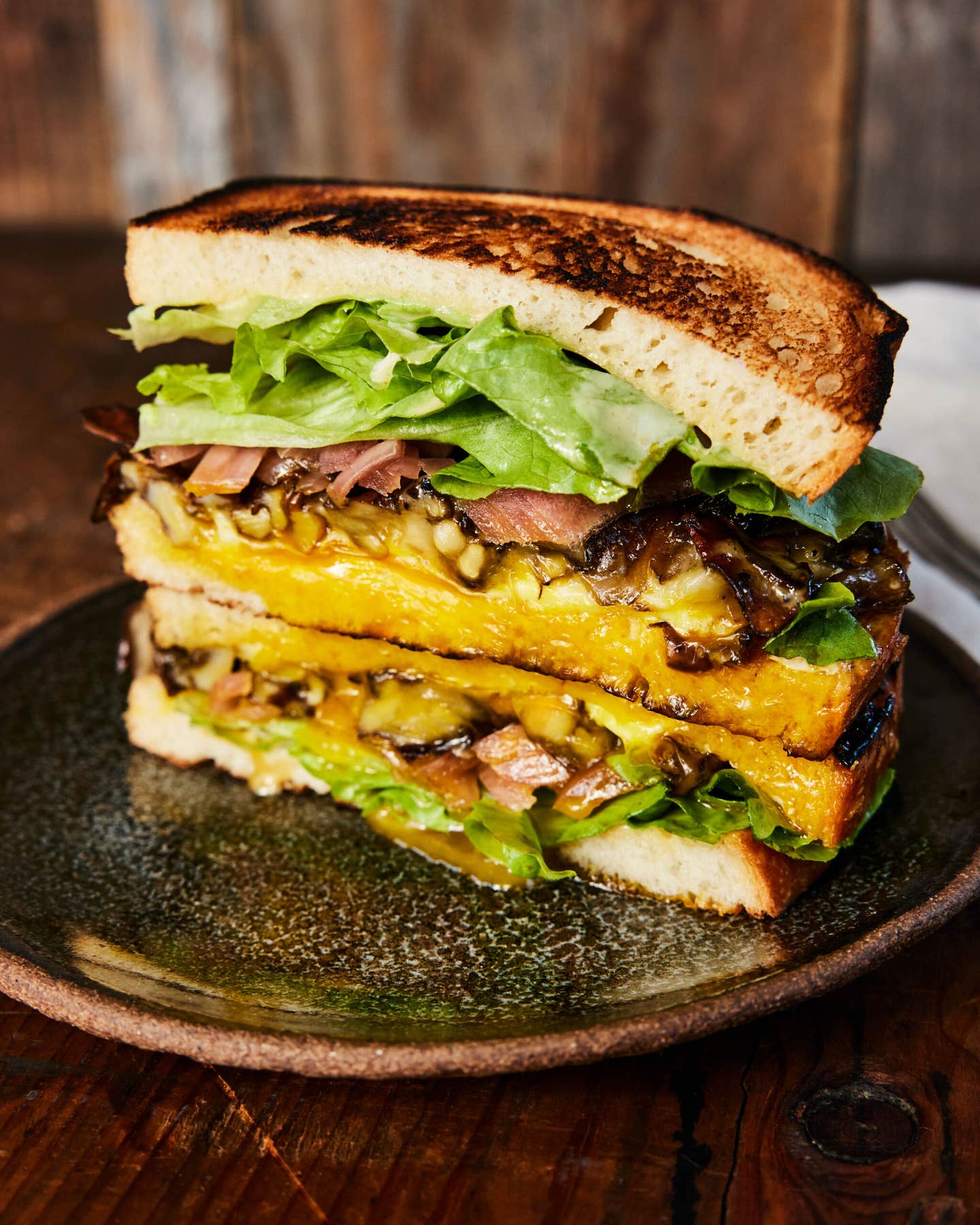
An Obsessive’s Ode to Onigiri
Japan’s simple, colorful rice balls are the ideal on-the-go snack
As a portrait and travel photographer, I've visited and lived in many countries, but Japan is an exceptional place to me. So exceptional, in fact, that I made Tokyo my home earlier this year. In daily life, there is a near reverence for detail and quality that I have not seen elsewhere. This is apparent in almost everything, but for me it's most poetically expressed in the simple rice ball snacks called onigiri. I love their versatility, their minimalism, and the fact that even in the humblest of places, onigiri are made with attention and care.
Onigiri are portable parcels that fit in the palm of your hand (nigiri means "to squeeze"). They are sold in tiny rice shops, izakayas, department-store food halls, and convenience stores, like 7-Eleven. They look a little bit like sushi, but they aren't seasoned with mirin the way sushi rice is. Some are wrapped in crisp nori or fresh shiso leaves; others are naked or made with rice mixed with ingredients like sesame seeds. I like the classic fillings, such as salmon, kombu, and tarako (salted cod roe). Umeboshi (pickled plum) is also quite popular, as is tuna, shrimp tempura, and even cheese.
Before I moved to Japan, I eagerly sought out onigiri on every visit. It was my go-to quick snack, light lunch, or parting souvenir for the plane. But now that I live here, I realize that the same qualities that make them convenient snacks also make onigiri great finger food for parties—you can prepare them ahead of time, their fillings are interchangeable, and they come in fun, tidy packages. After 15 years of obsessing over them, I wanted to learn more about making onigiri for my own shop, so I visited Reiko Yamada, author of Everyday Onigiri (Pottoshupan 2014), in Tokyo.
I expected to learn a strict tradition—complicated techniques and precise rules passed down over centuries and centuries. But what Reiko-san reinforced was the sense that there are no rules. “Just have fun,” she told me. There is no need for a rice cooker; an old pot with a lid will do. You can use whatever fillings are right for your mood. I noticed that making onigiri with Reiko-san in Tokyo—cupping the rice gently into triangles or balls and stuffing them or patting on toppings—felt just like decorating holiday cookies back in New York City. She showed me that onigiri are as simple or as fancy as you want them to be. That is their beauty.
The Best Onigiri Shops in Tokyo

Matsuya Ginza
This shop has a counter for regular onigiri, and another for boxes of mini onigiri with many tempura fillings within the Matsuya department store.
Isetan Shinjuku
This sits within a great and expansive food hall in the basement of the luxury department store Isetan. They have a vast selection and menus in both Japanese and English.
Seibu Ikebukuro
One of the more extensive selections of traditional onigiri in the huge department store Seibu.
Omusubi Gonbei
A freestanding onigiri chain, they offer a wide variety of onigiri in all shapes and sizes, not just the most popular rounded triangles.
Iizuka Seimaiten
This is part rice shop, part onigiri shop in the Meguro area of Tokyo. In the mornings they sell a number of onigiri using pesticide-free rice.
Keep Reading
Continue to Next Story










